Defining EVPs (Electronic Voice Phenomena)
Wikipedia - EVPWithin ghost hunting and parapsychology, electronic voice phenomena (EVP) are sounds found on electronic recordings that are interpreted as spirit voices that have been either unintentionally recorded or intentionally requested and recorded. Parapsychologist Konstantīns Raudive, who popularized the idea in the 1970s, described EVP as typically brief, usually the length of a word or short phrase.
Who started this shit?
As far back as the 1920s Thomas Edison was the first person to hint at building a “ghost machine” for communicating with the dead, but an American photographer Attila von Szalay was the first to publicly claim to have created an electric device specifically to speak to the dead. He started off in 1941 recording onto 78 rpm records but ended up switching to a reel-to-reel system mounted in an insulated cabinet connected to a recording device and speaker. Working closely with colleague Raymond Bayless, he supposedly discovered that, upon playback, he could hear disembodied voices making intelligible comments. Some of the first recordings are said to contain such messages as “This is G!”, “Hot dog, Art!” which is a way different statement if you remove the comma, and “Merry Christmas and Happy New Year to you all!” He would later see his work with Bayless published in the Journal of the American Society for Psychical Research and went on to co-author the 1979 book Phone Calls From the Dead.
Another top-dog in the arena of Creating Something from Nothing was the Latvian (literal, not mister)doctor Konstantin Raudive who, in 1969, claimed to have recorded 72,000 EVPs with various assholes from history such as Stalin, Hitler, and Mussolini…all in Raudive’s native tongue. TOTALLY BUYING IT, YOU GUYS. He was the originator of the term EVP, but under his umbrella it was referred to as Electronic Voice Projection. As he continued his, ummm, “research”, he also apparently began capturing the disembodied voices of animals, one such animal being that of a budgerigar named Putzi who inexplicably spoke in the voice of a known dead 14-year-old girl. Don’t be suspicious, don’t be suspicious…
The resurgence of EVP interest came when Sarah Estep founded the American Association of Electronic Voice Phenomena (AA-EVP) in 1982. She wanted to raise awareness about EVPs and standardize practices around collecting communication from the dead. Since 1976, Sarah claims to have made hundreds of recordings of messages not only from her own deceased loved ones as well as the loved ones of others but also EXTRATERRESTRIALS. So there’s that.
CIA - What You Doin', Baby?
The "field" seemed to proceed in the most unscientific manner, nothing was ever measured, although the words "research" and "expert" were bandied around like tokens in a game of "let's play scientists."
"Some Findings Relating to the Electronic Voice Phenomenon" - Alexander MacRae
So, of course, the CIA was heavily involved in investigating all manner of paranormal phenomena from the 1950s to the 90s and potentially even now, although we wouldn’t have access to those documents. What they have released is…less than promising, to be honest. So, Alexander MacRae seems to be skeptical from the quote above but he was sold on it really easily. His experiments were about as structured as they could be based on dealing with a nebulous concept like paranormal communication, and he charted extensive data, even going as far as to not bring his own personal interests into the EVPs and just counting the words heard, the length of the messages, and the typical speech patterns.
He also created some sort of device that I can’t seem to find diagrams for but the CIA apparently looked into the device, requesting full plans for building so they could replicate his study. They also asked MacRae to send samples of EVPs but they were “not greatly impressed,” stating “much noise, whistle and something barely audible which (with a certain degree of imagination) can be interpreted as words. However, we still believe that the field is worthy of inquiry.”
DIY EVP Vibes
If you’re interested in freaking yourself out and trying to hear intelligible comments in random white noise, here are the tips we got from a super official looking website called LiveAbout.com.
- Buy equipment. It is suggested that you buy the best digital recorder and headphones you can afford, adding an omnidirectional microphone if you can. Be sure your equipment is charged, has fresh batteries, and in good working order. Always choose the high quality output option for your files.
- Choose your location. Obviously if a house is “haunted” it would seem logical that it would pick up more EVPs than a non-haunted location.
- Keep it quiet. You want as little outside sound as possible in order to hear the often soft and subtle voices. Turn off phones, computers, AC/Heaters, and anything else that makes noise.
- Ask questions. Keep your normal tone of voice and be sure to leave plenty of space for responses. Examples of questions: Are there any spirits here? Can you tell me your name? How did you die? Why are you here?
- Have a conversation. If you have a Paranormal Pal, don’t avoid talking to each other. Apparently ghosts are fucking eavesdropping interrupters.
- Keep an ear out for ambient noise. You want to make sure you’re taking into account someone talking on the phone in the other room or children playing outside so you don’t mistake those sounds for EVPs.
- Take your time. You don’t need to spend hours recording, but don’t rush it.
- Listen to the recording through the speakers on your computer or headphones. It’s pointless to try to listen on the tiny speaker of your recording device, just bring it onto your hard drive so you can adequately listen for communications.
- Edit the files to hear potential responses. Editing can help bring clarity to your recordings.
- Get other opinions. You may hear one thing but your friends may hear something entirely different. Get opinions not only to decipher the message, but also to take out your own expectations of hearing something. You could be hearing a message that no one else hears because you just spent a fucking hour in a room talking to the wall.
Additional tips: work at night (never underestimate the dark’s impact on your fragile psyche), join the club (y’all can all gas each other up to hear spooky shit where it doesn’t exist), listen to other EVPs (freak yourself out so you will be paranoid enough to hear EVPs in your own recordings).
Theoretically, How do EVPs Work?
It was so hard to find any articles that attempted to explain how spirits of the dead can use technology to send messages to the living. It’s almost as though people know this is bullshit…but I digress. This is essentially the extent of what I found and it’s not much.
“Energy” through Radio Waves
Most “investigators” refer to energy a lot. It’s often phrased as “manipulating energy”, using “energy fields”, or creating “energy” used to send messages. Einstein is quoted often, quelle surprise, because AS WE ALL KNOW energy doesn’t die, it just changes. I don’t think they understand how irrelevant that is to what they are talking about.
White and Ambient Noise
There are so many paranormal investigators that outright state you have to have white noise to hear the messages ghosts have for you. It can’t be overstated that they are often vitriolic towards “haters” and “scientists” or “skeptics” and completely refute the obvious explanations of auditory illusions, audio pareidolia, or wishful thinking under the assumption that if they are hearing it IT’S REALLY THERE.
Multidimensional Impressions
The most interesting explanation, and one that I’m the most likely to buy into even though I don’t buy into EVPs at all, is that we are essentially living in one layer of a layer cake and sometimes other layers come through. This, to me, is the more likely of all the explanations but I still don’t believe its a thing that could ever be qualified or proven.
Nonsensical EVP Technology
Spiricom
In 1980, William O’Neil constructed an electronic audio device called “The Spiricom”. O’Neil claimed the device was built to specifications which he received psychically from George Mueller, a scientist who had died six years previously. At a Washington, DC press conference on April 6, 1982, O’Neil stated that he was able to hold two-way conversations with spirits through the Spiricom device, and provided the design specifications to researchers for free. However, nobody is known to have replicated the results O’Neil claimed using his own Spiricom devices. O’Neil’s partner, retired industrialist George Meek, attributed O’Neil’s success, and the inability of others to replicate it, to O’Neil’s mediumistic abilities forming part of the loop that made the system work. In 2020 Kenny Biddle wrote a comprehensive article explaining the origins of the Spiricom as developed by O’Neil and Meek. He was prompted to do so by the re-emergence of the device on the television series Ghosthunters. He comprehensively debunked the “science” behind the device in both the original development and the Ghosthunters episode.
Frank's Box, Ghost/Spirit Box
Another electronic device specifically constructed in an attempt to capture EVP is “Frank’s Box” or the “Ghost Box”, created in 2002 by EVP enthusiast Frank Sumption for supposed real-time communication with the dead. Sumption claims he received his design instructions from the spirit world. The device is described as a combination white noise generator and AM radio receiver modified to sweep back and forth through the AM band selecting split-second snippets of sound. Critics of the device say its effect is subjective and incapable of being replicated, and since it relies on radio noise, any meaningful response a user gets is purely coincidental, or simply the result of pareidolia. Paranormal researcher Ben Radford writes that Frank’s Box is a “modern version of the Ouija board… also known as the ‘broken radio'”.
Telephones, Digital Recorders
In 1979, parapsychologist D. Scott Rogo described an alleged paranormal phenomenon in which people report that they receive simple, brief, and usually single-occurrence telephone calls from spirits of deceased relatives, friends, or strangers. Rosemary Guiley has written “within the parapsychology establishment, Rogo was often faulted for poor scholarship, which, critics said, led to erroneous conclusions.”
In 1995, the parapsychologist David Fontana proposed in an article that poltergeists could haunt tape recorders. He speculated that this may have happened to the parapsychologist Maurice Grosse who investigated the Enfield Poltergeist case. However, Tom Flynn a media expert for the Committee for Skeptical Inquiry examined Fontana’s article and suggested an entirely naturalistic explanation for the phenomena. According to the skeptical investigator Joe Nickell “Occasionally, especially with older tape and under humid conditions, as the tape travels it can adhere to one of the guide posts. When this happens on a deck where both supply and take-up spindles are powered, the tape continues to feed, creating a fold. It was such a loop of tape, Flynn theorizes, that threaded its way amid the works of Grosse’s recorder.”
With the modern mobile telephone, users can download apps marketed to those looking to play ghost hunter such as the Spirit Box App in the video above.
Detuned Radios
In 1997, Imants Barušs, of the Department of Psychology at the University of Western Ontario, conducted a series of experiments using the methods of EVP investigator Konstantin Raudive, and the work of “instrumental transcommunication researcher” Mark Macy, as a guide. A radio was tuned to an empty frequency, and over 81 sessions a total of 60 hours and 11 minutes of recordings were collected. During recordings, a person either sat in silence or attempted to make verbal contact with potential sources of EVP. Barušs stated that he did record several events that sounded like voices, but they were too few and too random to represent viable data and too open to interpretation to be described definitively as EVP. He concluded: “While we did replicate EVP in the weak sense of finding voices on audio tapes, none of the phenomena found in our study was clearly anomalous, let alone attributable to discarnate beings. Hence we have failed to replicate EVP in the strong sense.” The findings were published in the Journal of Scientific Exploration in 2001, and include a literature review.
Wanna Scare Yourself with EVPs?
Listen, neither of us believe this shit is real, but it’s still hard to be chill about listening to what sounds like a primal demon scream. That being said, we’ll understand if you wanna skip this section and we’ve tried to give fair warning as to the content of the “EVPs”.
demon shit fit
What makes this one the most convincing (but still suspect, to be honest) is that it seems like it was just a normal guy recording in his sister’s bathroom because weird shit was happening and they wanted to figure out why she felt so unsafe in that room.
ultra-violence: ghost edition
So, like all of these EVPs, there is no way to verify this 10-minute recording. Take it with a big chunk of salt. The people who recorded the audio were also from Ghost Hunters which, you know, the reality of most “hauntings” are so goddamn mundane that it would be impossible to keep an audience if you didn’t gussy it up a bit for film. What really makes us skeptical is that the hotel “asked to keep the exact location confidential due to the nature of the recordings.”
OOOOOOOR it’s fake and you can’t give the name of a hotel when you are faking something like this because they’ll be, like, nope. Anyway, you will hear what sounds like a cuckoo clock ticking…they say there is no way that noise could have been in the room because there isn’t a cuckoo clock there, I say my regular clock is pretty goddamn loud in a quiet room but whatever. You will also hear what sounds like a physical struggle and a woman screaming “get off me”. There is also a man asking for help repeatedly even though supposedly no men were on staff that night and you hear investigators continuing their conversation throughout all of it.
How to Fake an EVP
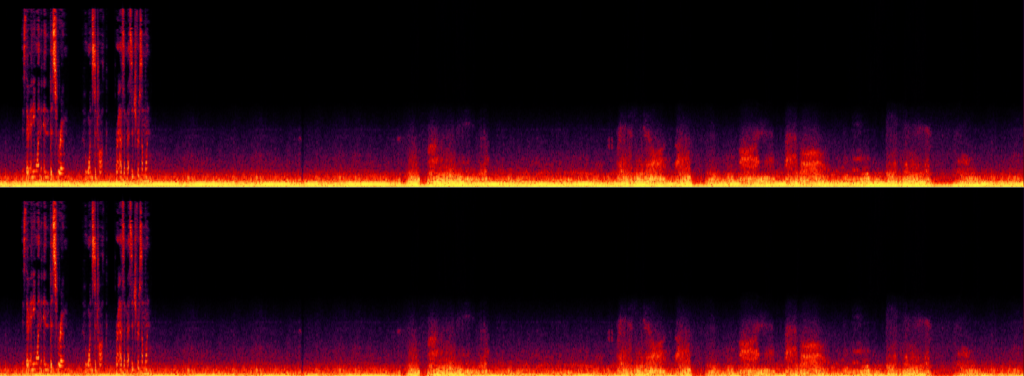
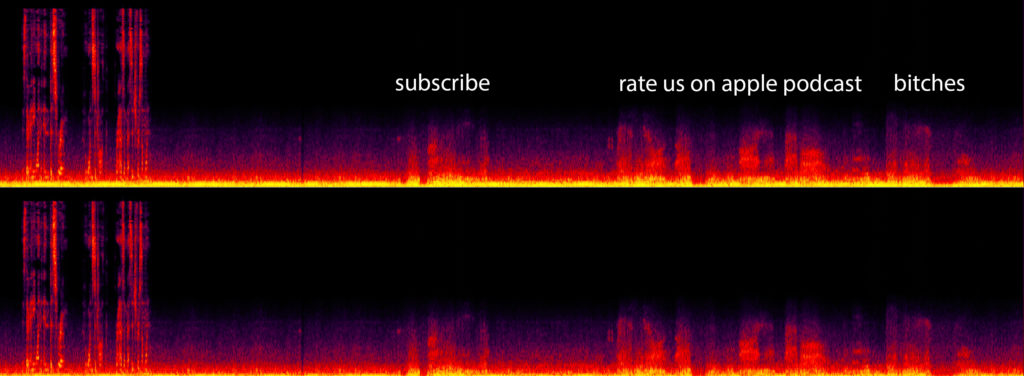
It was surprisingly easy for Jolie to create her very own convincing EVP using just her iPhone and Adobe Audition. She started with four different pieces of audio, one room tone, one close to a floor fan, one of her asking questions, and one of her whispering her “ghostly” message into the phone’s mic. All were recorded using only the voice recorder app in phone.
She first started by editing the room tone and fan together to provide a convincing base sound for the EVP to sit on top of. Then she edited her questions to sound like they were coming from further away from the mic as well as adding a bit of reverb to sound like an open room. From there, she edited her response in a few filters to create a distorted digital sound. It’s fairly easy to produce this effect if you push the dereverb and denoise filters to their very limit as well as putting a parametric filter to cut out all the high-end sound and taper down the part of your voice that gives the most clarity. All in all, it took her about 10 minutes to produce this EVP, and she doesn’t really know much about sound editing, as early episodes of our podcast clearly indicate.
The images above show what she is left with after all that work and it similar to what you see in ghost hunter shows where they show you they “didn’t hear this until [they] looked through the spectral frequency channel.” So you can see that the white noise is displayed directly after Jolie’s initial question and when you see the noise breaking up in the spectral frequency after the noise, that’s when Jolie says “subscribe” and “rate us on Apple Podcast, bitches.”
super animated evp story
This lady freaked herself and her coworkers out with some weird noises that, apparently, meant a ghost wanted to seduce her boyfriend…so there’s that.
shhh! she's sleeping
This Reddit find is really short and hard to hear, but apparently it was caught on a baby-cam and people hear someone say “shhh! she’s sleeping.” Hey, at least these ghosts are considerate baby-sitters.
ermehgerd erbs
This is the very definition of reaching…or, at least, someone who just smoked a bowl and decided to stay up to catch ghosts.
Psych 101 for Skeptics

Pattern Recognition
The simplest explanation is that EVP voices are just stray radio transmissions. Usually they are so faint and masked by static interference that it’s hard to make out what they are saying, and the EVP investigator has to “interpret” them for you.
That might seem like a weakness but that’s also their power. As Joe Banks, a sound artist, points out, a dead person speaking in studio quality wouldn’t be nearly so convincing as a voice you must strain to hear.
Banks has an ongoing project called Rorschach Audio. He suggests that the voices are the aural equivalent of inkblot tests devised by Swiss psychologist Hermann Rorschach. He argues that while the EVP experimenters think they are doing parapsychology, they are actually unwittingly carrying out psychology experiments.
Banks states in a November 2016 article on Rorschach Audio:
In responding to the argument that some listeners perceive EVP as being ghosts etc as a result of simple mishearings, “Parapsychology: A Handbook” states that “some writers have extended the pareidolia hypothesis by suggesting that listeners project themselves (in the Freudian sense) into random noise so that their interpretations are often tailored to their own personality and needs (hence the term “Rorschach Audio”)”. They go on to state that “Banks (2001)” has “offered an interesting analysis of this possibility… which we agree is certainly possible”. In fact I would say that this psychoanalytic aspect is particularly relevant in the case of the most famous EVP researcher, Konstantin Raudive, who stated for example on page 88 of his book “Breakthrough” that (quote) “utterances by Hitler or about him could fill a separate book” (emphases added).
Pareidolia & Auditory Hallucinations
Auditory pareidolia is a phenomenon that occurs when a naïve, unprimed listener perceives sounds that are not present in any part, and bear no similarity in meaning, to the actual stimulus.
With eyes: The eerie face on mars, religious figures on toast… etc. Pareidolia is defined as perceiving meaningful patterns or objects in non-patterned or amorphous stimuli (Schott, 2013) – early example includes the grouping of stars, commonly known as constellations.
Seeing a real face informs us of the presence of another animal (human or nonhuman) around us – another animal that can potentially harm or help us in important ways. In fact, it has been shown that we are ‘tuned’ to notice such stimuli. Pareidolia is not, however, limited to the appearance of faces. Take, for example, the Rorschach inkblot test used in psychoanalysis to uncover subconscious thought patterns. It is simply the experience of perceiving something meaningful or structured within something that is not structured and it comes from the natural human tendency to find meaningful patterns in our surroundings. It’s an act of making our environment intelligible – an adaptation obviously very useful for survival.
In Auditory Pareidolia, there are many interesting examples. One type includes the wondrous ‘phantom voices’ created by psychoacoustic researcher, Diana Deutsch – two spoken words or a single word broken up into two syllables. One word or syllable is played in one stereo channel while the other word is put through the other channel and the process is alternated across channels at a high rate. Initially the components are not recognizable as words but rather sound as though they’ve emerged from some sort of linguistic ‘uncanny valley.’ (The uncanny valley is a concept first introduced in the 1970s by Masahiro Mori, then a professor at the Tokyo Institute of Technology. Mori coined the term “uncanny valley” to describe his observation that as robots appear more humanlike, they become more appealing—but only up to a certain point —- like how the new sonic looked weird a.f. and they had to redesign him.) As this process repeats, entirely different, new words appear. Even more interesting is that the words heard are often related to the current psychological state of the perceiver – “hungry,””happy,””lonely” – in a manner similar to the internal states thought to be uncovered by the visual Rhorshach test.
Visually-Evoked Auditory Response
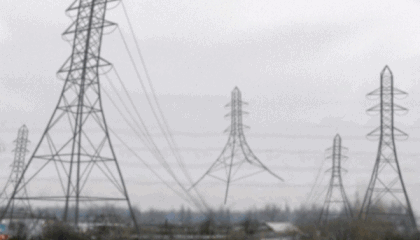
Going through the world, at every moment we are surrounded by movements that are logically associated with sound: we see a ball bouncing, and we expect to hear the bouncing. Because evidence suggests that so-called synesthetic pairings can be learned when we’re small, Dr. Christopher Fassnidge, Senior Research Officer at Medical Schools Council in London, says, it makes sense that many people can develop synesthesia for very common things. Other examples are a bit more unusual. Take, for instance, the pianist Nikolai Rimsky-Korsakov, who experienced different musical notes as colors. The two are rarely linked in everyday life, and so his ability is notable for that very reason.
It’s possible that many of us experience vEAR without ever noticing, Fassnidge says. Maybe we think a sound is real when it isn’t, simply because the sound makes sense. The very commonness of vEAR could mean that we don’t notice until it’s brought to our attention by these noisy GIFs. The GIF above isn’t the only example; there are plenty more in this subreddit.
Temporal Induction
Our brains naturally seek continuity in stimulus, so it stands to reason that, especially in the case of EVPs, we might hear the beginning of a sound and fill in the rest. I find this to be particularly relevant in ghost-box EVP sessions where the radio quickly cycles through channels and is supposed to catch ghostly communication.
Martin CookeUnder certain conditions, signals may be perceived as continuous even when temporal gaps are deliberated inserted and filled with noise (Miller & Licklider, 1950). This phenomenon applies to a wide range of signals from tones to speech, and has been termed temporal induction, apparent continuity, or the phoneme restoration effect when applied to speech signals (Warren, 1970).
The Power of Context & Suggestion
The brain has to process a lot of information at once, so it has a handy way of devising shortcuts utilizing information it has already stored by taking the context of the stimulus and filling in the blanks. So, if you are in a darkened room that is lit only by candles and you are trying to make contact with a specific deceased loved one, maybe even holding a belonging of theirs, you are more likely to hear their voice in the random noise of an EVP. When you expect to hear something, even if there is nothing to hear, your auditory cortex is active in the same way as if you are listening to something.
This speaking piano is a great example of the brains power to make sense of random information. If the words are not displayed on the screen, all you hear is random keys played rapidly, but once the words are displayed you HEAR them clearly. Nothing has changed, your brain has just filled in the blanks.
But Why do We Believe?
"Science-y" Jargon
Sharon Hill, geologist, researcher, and author of Scientifical Americans (McFarland, 2017)Specialized skills and high standards characterize scientific work. However, hardly any Amateur Research and Investigation Groups lists formal scientific training as a desired qualification of its members. ARIG members generally do what appear to be respectable, convincing, and “sciencey” things. The public mostly relies on heuristics, looking for cues that suggest a source of information is knowledgeable and sophisticated. Because much of the public has little understanding of the rigor and practices of science, it is easy for nonscientists to adopt a hollow likeness of science that misrepresents it. The average observer would not have the background knowledge to determine that ARIG portrayal of a “high-tech” paranormal investigation is ineffectual and without a sound foundation in scientific principals. ARIGs deliver sham inquiry—a process that gives the impression of scientific inquiry but lacks substance and rigor.
It can’t be understated that paranormal “researchers” or “investigators” do their absolute damndest to qualify and bolster their beliefs to seem more rational and realistic. One researcher, Sharon A. Hill, has a whole blog dedicated to faux-science called “Sounds Sciencey”. She released a research paper titled “Amateur Paranormal Research and Investigation Groups Doing ‘Sciencey’ Things in January of 2012 that delves into how amateur groups use scientific and technical jargon to promote paranormal beliefs while not adhering to any scientific principals of investigation.
In a pool of 1,600 websites chosen at random and based in the USA, she found that 879 were solely dedicated to the research of ghostly phenomena and hauntings. In the entire pool of websites, she used a browsers search feature to find results for “scien-” to determine the page’s reported “Scientificity.” If the use of the word was not positive (ie. anti-science), the site was counted as a no. If positive or neutral, it was counted as a yes. If no “sciencey” words were used it counted as not specified.
A total of 526 ARIG websites (52.6 percent) displayed scientificity by explicitly using “science” or “scientific” in reference to their mission, methods, or goals. An additional twenty-seven sites used “scientific” to refer to their equipment only. Twenty designated their group as “semi-” or “quasi-” scientific or strongly suggested science by use of oblique references such as “not an exact science.” Only nineteen ARIGs were completely nonscientific or anti-science, advocating a completely psychical or subjective approach. The remaining 40.8 percent of sites did not specify.
Existential Dread
Emma and Jolie have discussed at length how they feel like the belief that this is the only life you have can be either terrifying or liberating. Jolie, in particular, has frequently remarked that it makes her feel like this life is special because it’s the only chance she has to make a positive impact in the world and when she’s gone there is nothing on the other side waiting for her. For people who find it frightening to think of there being no afterlife for human spirits after death, the idea of spirits still being around to communicate with could be a comfort.
Grief
There are a lot of psychological studies on unresolved grief, dissociation, and paranormal belief structures that indicate grief is a powerful factor in hauntings and other paranormal experiences. Basically, you’re super sad, you want desperately to see your deceased loved one again, so you’ll look for them everywhere, even if it seems illogical. It’s a normal part of grieving to hear or see your deceased loved one after they die, but there’s no evidence that you are truly experiencing a haunting or a paranormal message.
We Hear What We Want to Hear
As for the physical origins of EVP, the version of the “Rorschach Audio” paper that “Parapsychology: A Handbook” cites, suggests that potential sources of stray voices include “taxi transmissions, emergency services, air-band, maritime, military, short, medium and long-wave commercial broadcasts, TV voice channels, ham radio experiments, CB radio, bugging devices, conferencing systems, intercoms, baby intercoms/alarms and analog mobile phones” etc. Commercial broadcasts and TV voice channels notwithstanding, it is particularly interesting that, in terms of active listening, this chapter’s authors had the acuity to notice that “some EVP are immediately preceded by a click or a signal break-in as if the transmitter button on a two-way radio has been keyed”. If that is the case, then what this suggests is that even putatively “authentic” EVP recordings (recordings that don’t resemble “songs, commercials, news” etc) can result from interference of the very kind the chapter’s authors tried to discount. The authors then dismiss the possibility that what they’ve offered is evidence disproving ghostly origin however, by asking readers to believe that “the EVP that follows the click is clearly not a CB, walkie-talkie or ham radio transmission” (emphasis added), without explaining why, and overlooking the possibility that an ordinary CB or walkie-talkie burst may have been misheard as “authentic” EVP (ie – as a ghost) as a result of auditory pareidolia. The Handbook then states that a “dearth of research has left both EVP enthusiasts and debunkers free to assert their positions unfettered by evidence” (emphasis added), which is pretty laughable since, ya know, they just admitted there’s evidence that contradicts their claims.
EVP Round Two: Electric Boogaloo
The Grammy Goes to "Johnny in my Ear"
The woman receiving these voicemail messages has a deceased husband named John so of course this isn’t a buttdial. Here’s the backstory.
Ghosty Law & Order: SVU
The “ghost investigator” primes herself by asking the spirits if they will announce their crimes. “Tell me Rape or Murder.” …then she hears rape and murder. Who’dduh thunk.
Trolly McPigButt
Obviously a fake, but this is totally the type of ghost we would like to be. Just being weirdos in the afterlife.
EVP Celebrity Appearances
- Marilyn Monroe, Roosevelt Hotel Suite 1200. 1:55 time stamp
- Micheal Jackson “EVP” session. 5:00 time stamp
Listen...No.
Emma’s full notes were “ew wtf” and I feel like that’s all you really need to know.
A Demon Says What?
Obviously fake as shit, but it’s still creepy enough to warn you to listen during daylight.
Ghost Hunters Making Bank from Celebrity Death
Steve Huff & Other YouTube Assholes
Steve Huff, Huff ParanormalI repeat. Nothing I post here is fake, made up or drummed up from a crazy mind. I do not have the time to sit around and fake videos of Paranormal activity. I would never ever do that as it would be childish, dumb, a waste of time and very very silly and in my opinion anyone who fakes paranormal evidence or more specific [sic], spirit communication, deserves a special place in hell as this is not to be mocked. This research is way too important to take lightly, make fun of, or even do incorrectly which is why all I have ever done has been honest, true ad [sic] very real research.
To be fair, Steve Huff isn’t the only Paranormal Prick on YouTube, he just seems to be the most notable of the bunch.
Steve Huff is a photographer turned paranormal investigator that made a name for himself as an “expert” in the field of electronic voice phenomena. He claimed to have been working in the field for 10 years (based on a biography published in 2018 on his website, huffparanormal.com). He has furthered his brand by creating “technology” widely used in EVP investigation, even being featured on popular television shows like Paranormal Investigation to reportedly wide success.
Celebrity EVPs & Demon Attacks
Steve Huff gained popularity on YouTube through his TOTALLY REAL NOT AT ALL PANDERING AND DISTASTEFUL celebrity EVPs with everyone from the recently deceased Chadwick Boseman to Bollywood star Sushant Singh. While he claims that he would never fabricate these communications from the dead, the EVPs he posts are very clearly mined from interviews and other media widely available online and chopped up to seem like “new” messages. He has been lambasted by sound engineers and “haters” for his distasteful trend of capitalizing on celebrity deaths as well as his absolutely shoddy use of sound editing to produce his sessions.
In 2017 he claimed to be leaving the world of EVPs and ghost fuckery (quick guess whether or not he came back almost immediately) due to essentially being terrorized by demons. Lots of “paranormal” journalists published his note left on the Huff Paranormal Facebook Page which gave him a boost in viewers.
Read his goodbye letter by clicking the images above.
Fake Technology & Merch Peddling
From Huff Paranormal's WebsiteDuring that time when the SCD-1 [Huff's original software app produced with Anthony Sanchez from GhostHunterApps.com] was launched I was working on what eventually became the Portal device. It was simple and only consisted of three main core parts. A powerful Amplifier, an effective deep and rich Reverb effect and a noise reduction effect so when we used it with scanning radios, it would cut out the static noise. Spirits were leaving me messages saying “cut the noise” and even “noise hurts”. So I took that as a message to get rid of the noise by using Noise Reduction. This way, if we put a P-SB7 into the portal’s input that screechy noise would be cut by 80% and spirit replies would be longer, and clearer. It was incredible. Using the SCD-1 scanning software into the Portal enhanced replies dramatically for me, so I knew I was onto something here. I called it the Portal, as spirits were always telling me “The Portal”..and I never knew why. Then it hit me. They wanted me to name it “The Portal".
Essentially, the device is a speaker with a noise gate hooked to a guitar pedal to produce reverb that the spirits can use to form communications with the user…ALLEGEDLY. It’s dumb as hell and, to be frank, it’s really clear that the celebrity “EVPs” Steve posts on YouTube could not possibly be created using just this device. When he demonstrates in “live sessions”, the EVPs he receives don’t even sound like words.
He also has created a device that you use to record your voice, then you play it backwards, and supposedly ghosts can use that as white noise to send messages. Oh. The. Dumb.
Faux Skepticism & Reality TV's Ghost Hunters
The Ethical SkepticIt’s not that all the material contained in the embargoed hypotheses realm has merit. Most of it does not. But what is comprised therein, even and especially in being found wrong, resides along the frontier of new discovery. You will soon learn on this journey of ethical skepticism, that discovery is not the goal of the social skeptic; rather that is exactly what they have been commissioned to obfuscate. Science to them is nothing more than an identity which demands ‘I am right’.
It has to be said that the paranormal investigation shows that purportedly attempt to “debunk” hauntings or paranormal activity through (what they call) scientific methods almost go over the top trying to appear skeptical. I found this while watching the “documentaries” produced by Jeremy Kenyon Lockyer Corbell (a real name for a real guy). There’s almost this idea that if you can convince these people that this thing is real you’d have to be an idiot to not believe the “evidence.” They sell that angle more than anything and it’s ham-fisted at best. As much as they go into the spiel of “I don’t believe but I’m open to it,” it really seems as though they were leaning more toward the direction of believing or even wanting to believe so they were more likely to see unimpressive evidence as holding more weight than it truly did.
Inductive reasoning makes broad inferences from specific cases or observations. In this process of reasoning, general assertions are made based on specific pieces of evidence. Scientists use inductive reasoning to create theories and hypotheses. An example of inductive reasoning is, “The sun has risen every morning so far; therefore, the sun rises every morning.” Inductive reasoning is more practical to the real world because it does not rely on a known claim; however, for this same reason, inductive reasoning can lead to faulty conclusions. A faulty example of inductive reasoning is, “I saw two brown cats; therefore, the cats in this neighborhood are brown.”
Inductive reasoning is HEAVILY leaned upon in the field of paranormal investigation, so I felt it was worth describing here. While inductive reasoning can be used successfully, it can also go horribly awry real goddamn quick.
Good: The sun rises every day. Tomorrow is a day. The sun will rise tomorrow.
Bad: All crabs have pinchers. All grandmas pinch cheeks. All grandmas are crabs.
The Ethical Skeptic as quoted at the beginning of this section, has also mentioned the use of Panduction.
He states:
There are three general types of Panduction. In its essence, panduction is any form of inference used to pan an entire array of theories, constructs, ideas and beliefs (save for one favored and often hidden one), by means of the following technique groupings:
1. Extrapolate and Bundle from Unsound Premise
2. Impugn through Invalid Syllogism
3. Mischaracterize though False Observation
As Ethical Skeptic states in this article, a common argument is that scientists do not believe in the paranormal so scientists can’t investigate the paranormal but at the same time, those that would describe themselves as paranormal investigators rely heavily on the inference of a scientific approach. It seems purposely confusing and combative.
So, WTF & Bonus Illusions
There really is no tidy way to wrap up all this information except to say that you should really consider your brain a powerful but fallible instrument that is often as lost as you are. WEEEEEE. Have some bonus illusions.
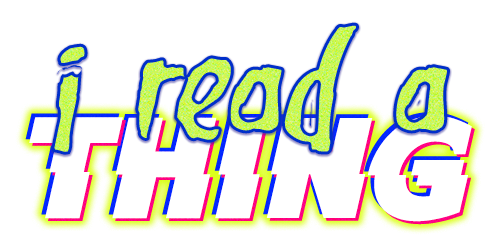
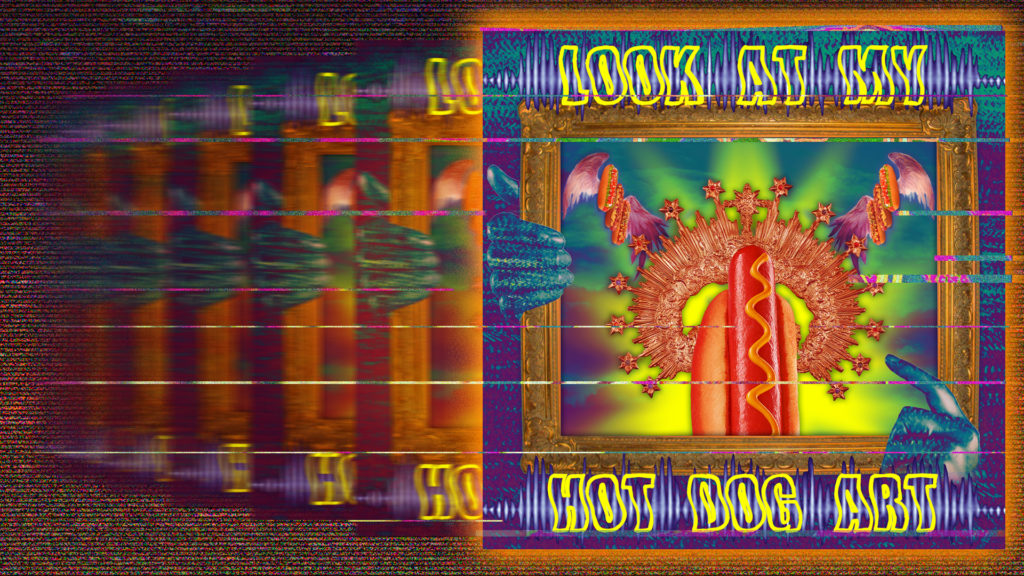



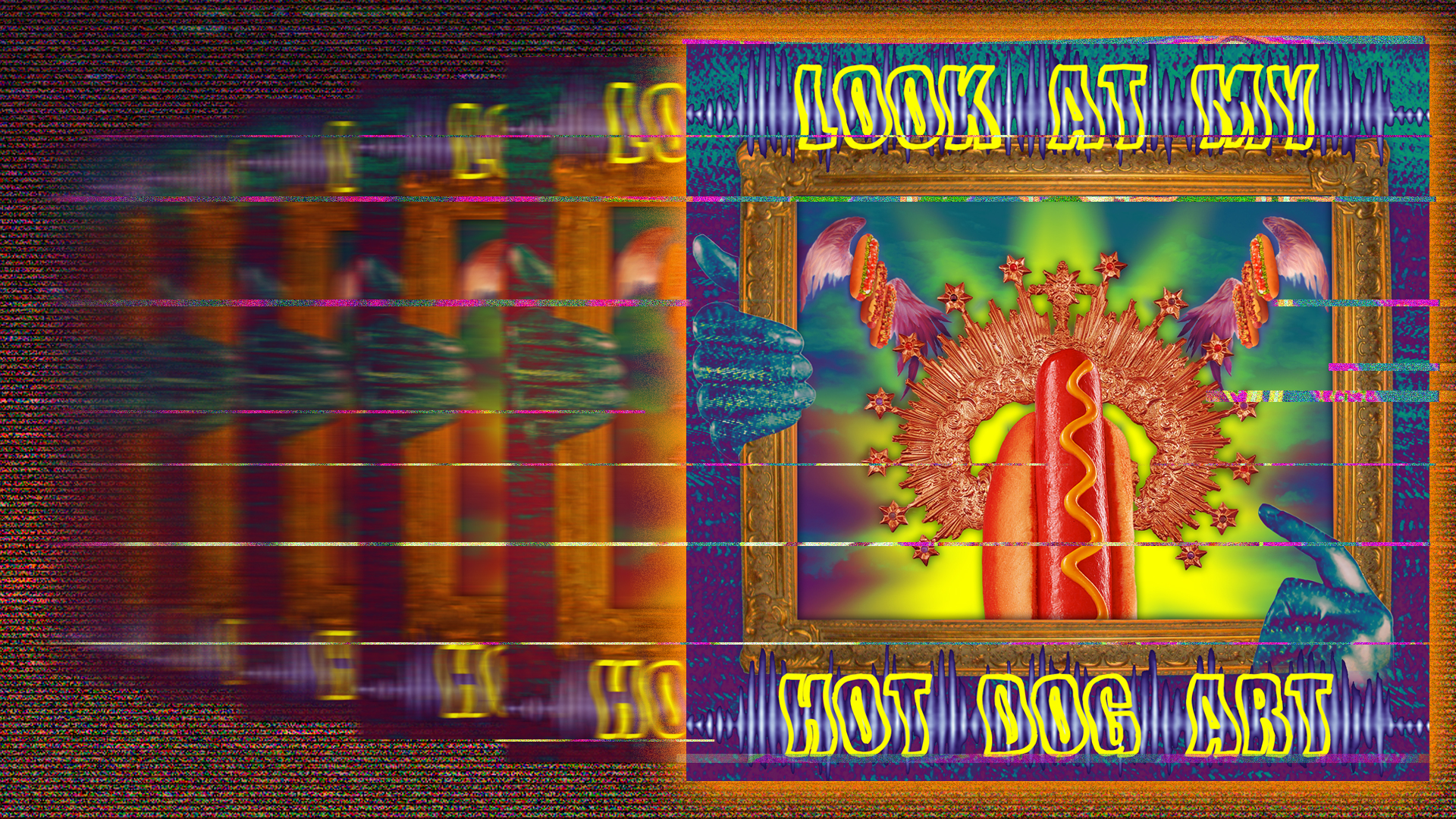

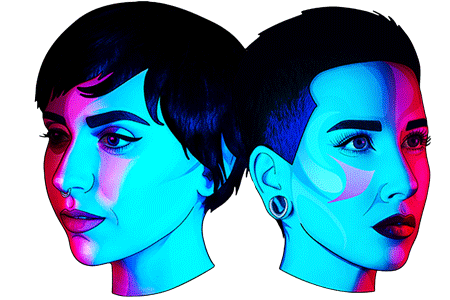
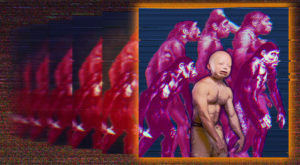
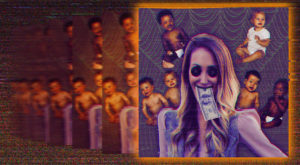



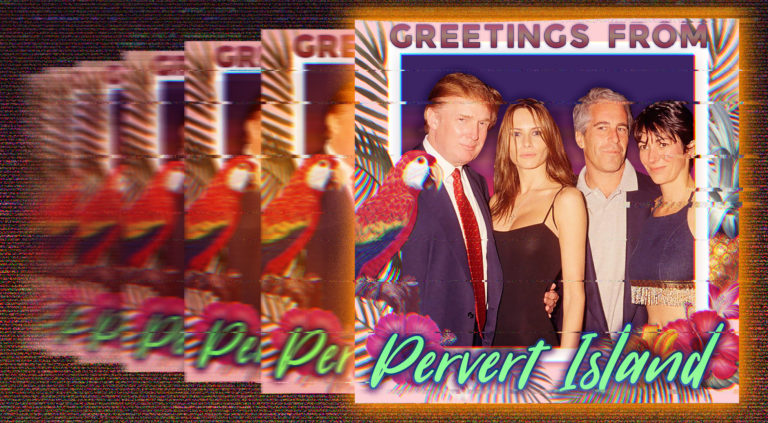
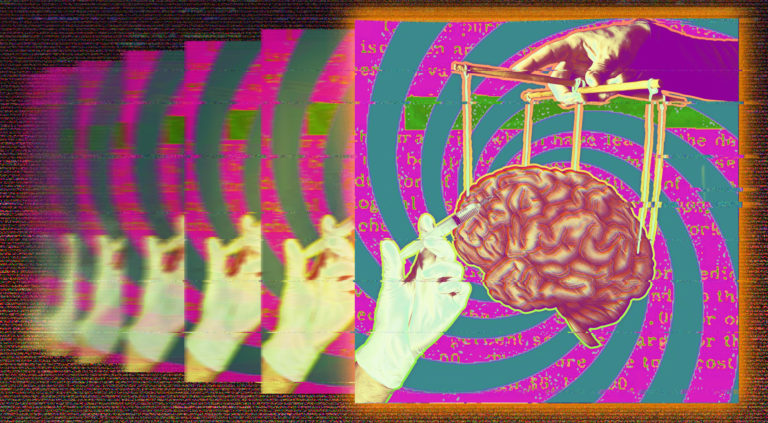
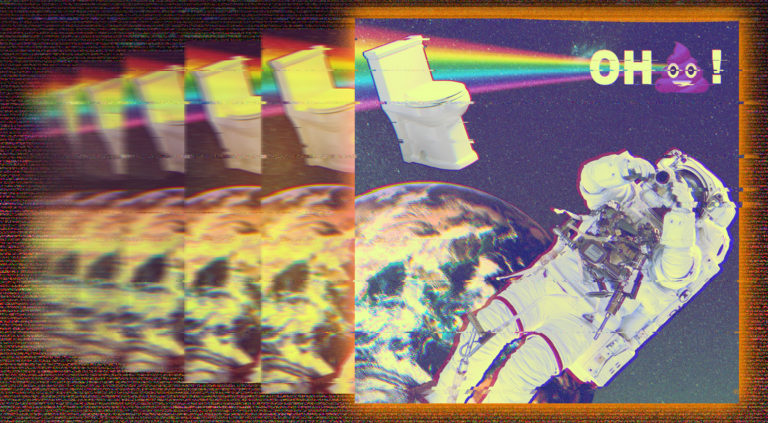
You have clearly done a lot of work on this article. I am impressed about how many people you have referenced. Some of your references are really out of date. Others, like Banks, have cherrypicked for their evidence. That is a ploy used by most skeptics. Shame on you for using material from Wikipedia. You can do better.
We advise against spending a lot of money on high-quality equipment. There is no need. We also advise against using an audio manger program to “enhance” examples. Other than a little amplification, if you cannot hear the example, then discard it. A lot of amplification will potentially make radiofrequency contamination audible.
And yes, we always advise the use of a listening panel.
Perhaps you would like to refer your readers to https://atransc.org/itc-white-paper/. The paper will give a little more current background. And, by the way, I approved the pingback for the “Johnny” EVP on atransc.org.